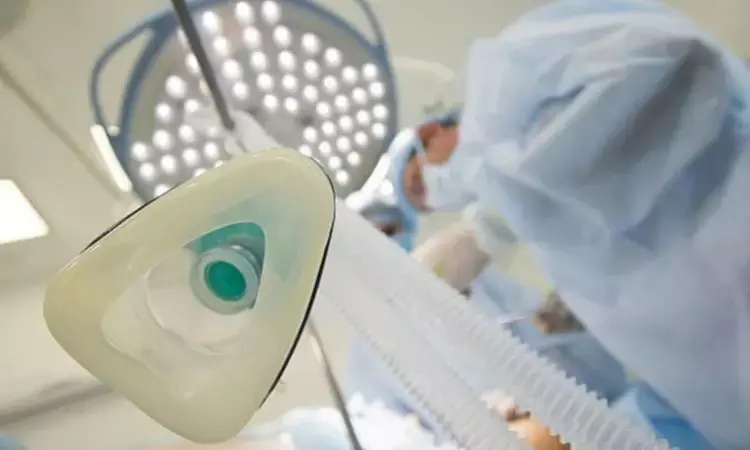- Home
- Medical news & Guidelines
- Anesthesiology
- Cardiology and CTVS
- Critical Care
- Dentistry
- Dermatology
- Diabetes and Endocrinology
- ENT
- Gastroenterology
- Medicine
- Nephrology
- Neurology
- Obstretics-Gynaecology
- Oncology
- Ophthalmology
- Orthopaedics
- Pediatrics-Neonatology
- Psychiatry
- Pulmonology
- Radiology
- Surgery
- Urology
- Laboratory Medicine
- Diet
- Nursing
- Paramedical
- Physiotherapy
- Health news
- Fact Check
- Bone Health Fact Check
- Brain Health Fact Check
- Cancer Related Fact Check
- Child Care Fact Check
- Dental and oral health fact check
- Diabetes and metabolic health fact check
- Diet and Nutrition Fact Check
- Eye and ENT Care Fact Check
- Fitness fact check
- Gut health fact check
- Heart health fact check
- Kidney health fact check
- Medical education fact check
- Men's health fact check
- Respiratory fact check
- Skin and hair care fact check
- Vaccine and Immunization fact check
- Women's health fact check
- AYUSH
- State News
- Andaman and Nicobar Islands
- Andhra Pradesh
- Arunachal Pradesh
- Assam
- Bihar
- Chandigarh
- Chattisgarh
- Dadra and Nagar Haveli
- Daman and Diu
- Delhi
- Goa
- Gujarat
- Haryana
- Himachal Pradesh
- Jammu & Kashmir
- Jharkhand
- Karnataka
- Kerala
- Ladakh
- Lakshadweep
- Madhya Pradesh
- Maharashtra
- Manipur
- Meghalaya
- Mizoram
- Nagaland
- Odisha
- Puducherry
- Punjab
- Rajasthan
- Sikkim
- Tamil Nadu
- Telangana
- Tripura
- Uttar Pradesh
- Uttrakhand
- West Bengal
- Medical Education
- Industry
THV design must be improved to reduce coronary obstruction risk during TAVR-in-TAVR: Study

Washington, DC: Design improvements are needed for transcatheter heart valve (THV) as the current TAHV designs for may lead to coronary obstruction during TAVR-in-TAVR and cause problems with future coronary access, reveals a recent study. The study is published in the journal Circulation: Cardiovascular Interventions.
The tall stent frame and supra-annular leaflet position of the self-expanding Evolut PRO or Evolut PRO+ THVs may cause coronary occlusion during transcatheter aortic valve replacement (TAVR)-in-TAVR and present challenges for future coronary access. Ron Waksman, MedStar Washington Hospital Center, Washington, DC, and colleagues therefore, sought to evaluate the risk of TAVR-in-TAVR with Evolut PRO or Evolut PRO+ THVs and the feasibility of future coronary access.
The CoreValve Evolut PRO Prospective Registry prospectively enrolled eighty-one patients with symptomatic severe aortic stenosis to undergo TAVR using a commercially available latest generation self-expanding THV at 2 centers in the United States. Computed tomography was performed 30 days after TAVR, which the researchers used to simulate TAVR-in-TAVR with a second Evolut PRO or Evolut PRO+ THV and evaluate for risk of coronary obstruction and feasibility of future coronary access.
Key findings of the study include:
- Computed tomography simulation predicted sinus of Valsalva sequestration and resultant coronary obstruction during future TAVR-in-TAVR in up to 23% of patients.
- Computed tomography simulation predicted that the position of the pinned THV leaflets would hinder future coronary access in up to 78% of patients after TAVR-in-TAVR.
Based on the above findings the researchers concluded that further THV design improvements and leaflet modification strategies are needed to lessen the risk of coronary obstruction during TAVR-in-TAVR with self-expanding THVs and to facilitate future coronary access.
"Risk of Coronary Obstruction and Feasibility of Coronary Access After Repeat Transcatheter Aortic Valve Replacement With the Self-Expanding Evolut Valve: A Computed Tomography Simulation Study," is published in the journal Circulation: Cardiovascular Interventions.
DOI: https://www.ahajournals.org/doi/10.1161/CIRCINTERVENTIONS.120.009496
Dr Kamal Kant Kohli-MBBS, DTCD- a chest specialist with more than 30 years of practice and a flair for writing clinical articles, Dr Kamal Kant Kohli joined Medical Dialogues as a Chief Editor of Medical News. Besides writing articles, as an editor, he proofreads and verifies all the medical content published on Medical Dialogues including those coming from journals, studies,medical conferences,guidelines etc. Email: drkohli@medicaldialogues.in. Contact no. 011-43720751


